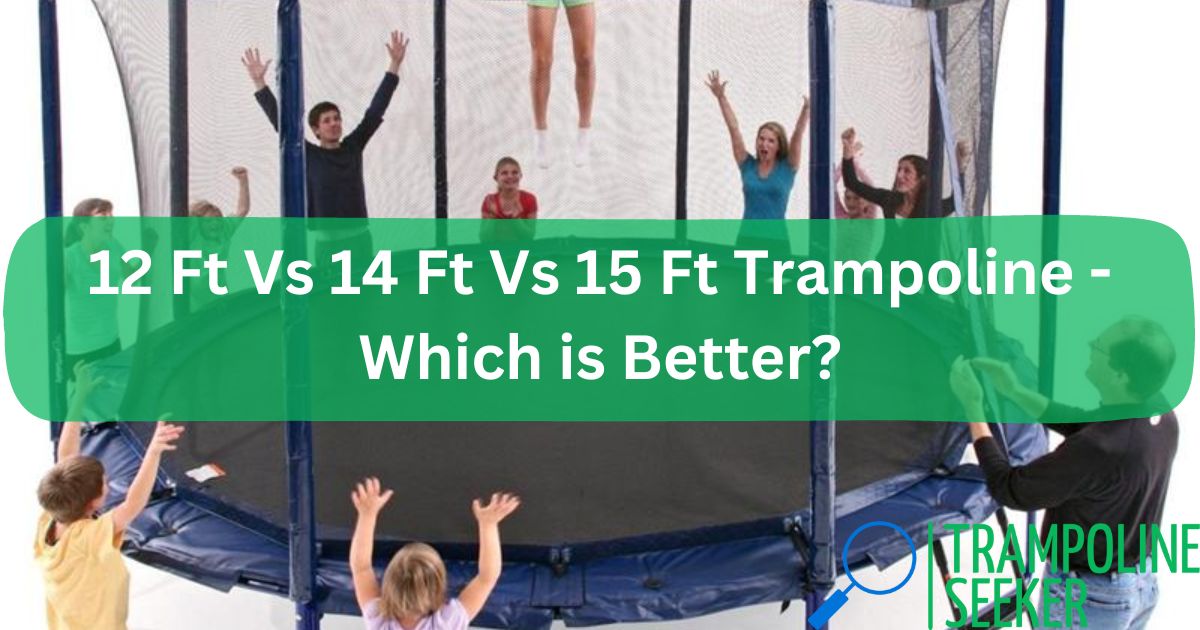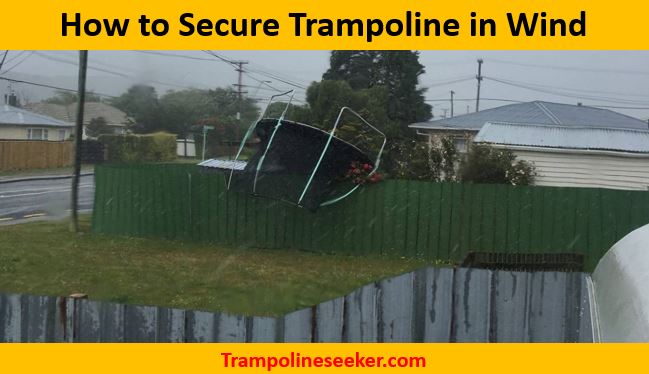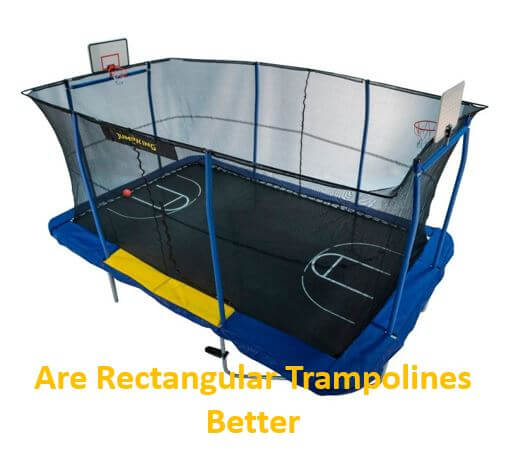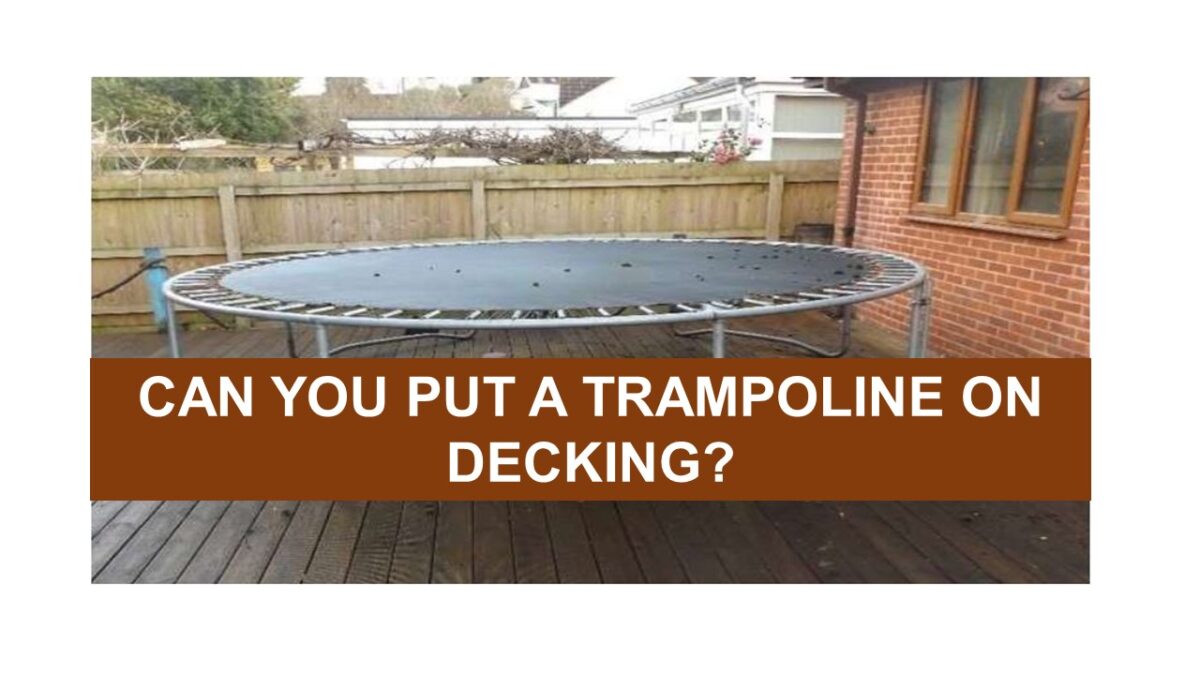Did you know there’s a right way and a wrong way to anchor your trampoline? Placing it on concrete is the kind of setup that requires correct anchoring techniques. But first, here are some things that you should know about placing your trampoline on concrete.
If you have a trampoline with springs, it is more challenging to anchor it on concrete. The main reason for this is that you need additional support to keep the force of the springs from causing the frame to bend or even break over time.
Keeping your trampoline anchored safely on concrete might require new hardware, some adjustments, and different types of anchors.
Let’s see how to anchor a trampoline on concrete in 6 steps.
Before you begin: What you need to know
If you’re reading this, you probably have a trampoline that was installed on a deck, a wooden deck, a patio, or a concrete pad, and you’re asking yourself, “How do I anchor it down?”
Trampolines are important pieces of equipment in any backyard that are used by kids and adults of all ages. When people use them, they go up in the air.
If a trampoline isn’t anchored down, it can become dangerous. The springs can break, the frame can collapse, and the whole thing can end up on the ground.
Apart from the safety aspect, trampolines are also an expensive purchase. So why would you want to jeopardize your trampoline’s lifetime and durability? You’re here because you want to know how to anchor a trampoline on concrete, yes?
How to anchor a trampoline on concrete?
Just follow the steps below to anchor a trampoline on concrete:
Step 1: Measure and mark where to place your anchors
Step 2: Install your concrete anchors
Step 3: Install the rebar
Step 4: Install your springs and trampoline mat
Step 5: Hook up your springs using a safety hook
Step 6: Test, retest, and re-retest!
Step 1: Measure and mark where to place your anchors
This is the first step in how to anchor a trampoline on concrete. By measuring your trampoline and the surface you’re attaching it to, you’ll be ensuring your trampoline will be placed in the correct position.
You’ll also be marking where to place your anchors. Make sure you know the exact measurements of your trampoline, as well as the measurements of the surface it’s going to be placed on.
These measurements will help determine how many anchors you’ll need and if you need to make any adjustments. If you need to, use a measuring tape to make sure everything is exact.
Marking where you want to place your anchors is important because it ensures that once you have them all in place, your trampoline will be positioned exactly where you want it.
Step 2: Install your concrete anchors
Concrete anchors are attached to the concrete pad on which you’ve placed your trampoline. These are different from the other types of anchors that you’ll use to anchor your trampoline springs, and those are placed on the trampoline frame. Concrete anchors are either sleeve anchors or rim anchors, depending on what type of concrete you are using.
We recommend sleeve anchors for concrete, as they grip the concrete better than rim anchors. If you want your trampoline anchored as strongly and stably as possible, sleeves are the best choice.
Step 3: Install the rebar
Rebar is a kind of steel bar that comes in various lengths and diameters. It’s used in concrete as reinforcement, as well as for constructing buildings, bridges, and other concrete structures.
When placed into the ground between your trampoline’s frame and the concrete pad, the rebar acts as a “cable” that transfers the pressure from the trampoline to the ground. This allows the concrete to function as a giant pad anchor and distribute the pressure from the springs, frame, and user weight evenly.
Step 4: Install your springs and trampoline mat
This is the most important step in how to anchor a trampoline on concrete. Once you’ve installed your concrete anchors, rebar, and springs, it’s time to connect everything. What you should do is place your trampoline mat on the frame’s springs.
Then, connect the trampoline mat to the concrete anchors using a “safety hook.” Let’s take a closer look at what a safety hook is and how it works.
A safety hook is a metal hook that you connect from the concrete anchors to your springs. This is the easiest way to secure your mat to the concrete anchors and the springs together, and it doesn’t damage your trampoline at all.
The last step is to connect your springs to the trampoline frame. Most trampolines have holes or hooks for this.
Step 5: Hook up your springs using a safety hook
Trampoline springs are powerful, and there are two types of springs used in trampolines: the open-ended spring and the closed-ended spring.
Open-ended springs are attached to the trampoline frame at one end, while the closed-ended spring is attached at both ends. Regardless of the type of spring you have, you’ll need to connect your springs to the trampoline frame using one or two hooks.
Open-ended springs are usually connected to the frame using one safety hook on each side of the frame. Closed-ended springs are a bit trickier: one side of the frame has a hook, and the other side has a grommet. It’s not as complicated as it sounds. Just make sure you’re connecting your springs to the frame with the right hooks before moving on to the next step.
Step 6: Test, retest, and re-retest!
Once you’ve anchored your trampoline on concrete, it’s important to test it out to see if it’s holding up. Remember, different types of concrete have different compression rates and strengths, as do different types of trampolines. So, your trampoline might be anchored correctly, but the concrete you’re using might be too weak to hold it. That’s why it’s important to test, retest, and re-retest your trampoline’s anchoring setup after you’ve placed it on concrete.
This way, you can catch any weak points or spots that need improvement so you can address them before they become serious issues. If you don’t test your trampoline, it’s possible that it won’t be as sturdy as you think it is. If you do have weak points, it’s important to repair them as soon as possible.
What do you think is the best way to anchor a trampoline on concrete?
It is crucial that you have several anchoring systems to prevent it from blowing away. These systems will come in handy when using a trampoline, even for the first time.
You can find yourself anchored using a piece of rope, a tree, or a fencepost to prevent the trampoline from blowing away in windy conditions.
People often use small piles of rocks as anchors for their trampolines, but that method can be ineffective for various reasons. The rocks can be blown away and harm the trampoline. People who anchor their trampolines on a tree risk having to cut down the tree if they want space to play on the trampoline.
Don’t risk your trampoline for the sake of anchoring it.
Concrete is sturdy enough to anchor a trampoline. But properly anchoring your trampoline is crucial, especially for everyone new to the trampoline game.
Must Read:













